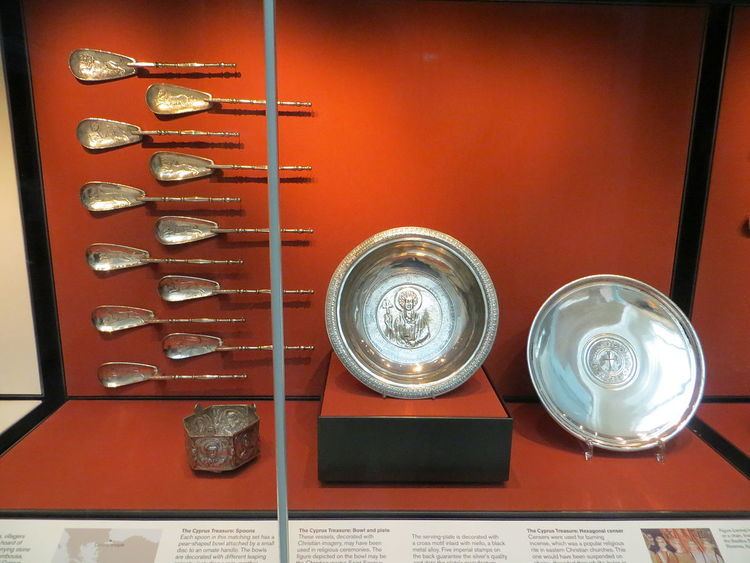Material Silver | Created 7th Century AD | |
 | ||
The First Cyprus Treasure or Lamboussa Treasure is the name of a major early Byzantine silver hoard found near Kyrenia, Cyprus. Currently in the British Museum's collection, the treasure is largely composed of liturgical objects that may have belonged to an ancient church or monastery. It is called the First Cyprus Treasure to distinguish it from the so-called Second Cyprus Treasure, which is now split between the Metropolitan Museum of Art and the Cyprus Museum.
Contents
Discovery
The hoard was found by accident at the end of the nineteenth century near the Acheiropoietos Monastery, west of Kyrenia at the ancient site of Lambousa. It is unclear why the treasure was deposited, but it may have been deliberately hidden to evade the invading Arab armies of 653 AD. Following its discovery, the entire treasure came into the possession of the French aristocrat Maurice de Talleyrand-Périgord, Duc de Dino, who in turn sold it to the British Museum in 1899.
Description of the treasure
The treasure was probably made in Constantinople, the capital of the Byzantine Empire, and is composed of 28 different objects, all made of silver. It includes a bowl with a half length image of a saint (possibly Saint Sergius), a paten with cross in the centre, a hexagonal censer and twenty-five pear-shaped spoons, eleven of which are engraved with leaping animals. The bowl is marked with five stamps from the reign of emperor Constans II, who reigned between 641-51 AD.
